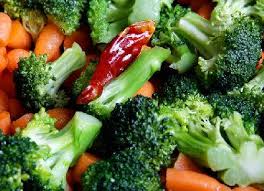What are alkaline foods? These are foods that contribute to the alkaline state of the bodily fluids and this is measured by the PH or Power of Hydrogen. The PH level of the body needs to be maintained at a level between 7.35 and 7.45. If it is higher or lower than this, symptoms or disease will occur. If the level drops to below 6.8 or rises above 7.8 the cells will stop working and the body will die. It is recommended that you test your pH levels to determine if your body’s PH needs immediate attention. By using PH test strips, you can determine your pH factor quickly and easily in the privacy of your own home. The best time to test your pH is about one hour before a meal and two hours after a meal. Test your pH two days a week

An acidic pH can occur from emotional stress, toxin overload, immune reactions or any process that deprives the cells of oxygen and other nutrients. Obviously, eating a diet that is very acidic can change your pH levels to a degree, as well. The body will try to compensate for an acidic pH level by utilizing alkaline minerals it has stored. If the diet does not contain enough minerals to compensate, a build up of acids in the cells will occur, starving it of oxygen.
This can decrease the body’s ability to absorb additional minerals and other nutrients, decrease the oxygen in the cells, decrease its ability to repair damaged cells, decrease its ability to detoxify heavy metals, allow tumor cells to thrive and proliferate, and make it more susceptible to fatigue and illness.
The American diet is very high in acid producing foods such as meat, cheeses, grains and alcohol and typically too low in alkaline producing foods such as green vegetables, fresh fruits, spices and pro-biotic cultures such as those found in real yogurt. In addition, we have become a society whose foods are filled with high fructose corn syrup, refined flours and preservatives, pharmaceuticals and artificial sweeteners – all of which are extremely acidic to the human body. One of the easiest and quickest ways to help correct an over-acidic pH level is by controlling diet and lifestyle choices.
To maintain health, the diet should consist of 70% alkaline forming foods and 30% acid forming foods. To combat chronic disease, the diet should consist of 80% alkaline forming foods and 20% acid forming foods. Eating a plant-based, high alkaline food diet is best for the human race and the more plant foods you eat, the better you will probably feel. Alkaline foods that are alkaline are essential to a healthy lifestyle! Your body needs plant enzymes from green, alkaline foods to help regulate every biochemical and metabolic process in your body. Cooking food destroys the very force that keeps us alive and healthy. When eating to improve your pH balance, always eat a diet high in raw fruits and veggies.
Here are some examples of foods that are alkaline forming.
Green grasses such as barley or wheat grass are some of the lowest-calorie, lowest-sugar and most nutrient-rich foods on earth, and contain high amounts of fibre. Greens and grasses are also an excellent anti-yeast and anti-fungal. Besides, in this way also blood sugar levels won’t soar and won’t cause an increase in blood insulin.
Other foods such sunflower sprouts, flax oil, brown basmati rice, millet, soaked almonds, tomato slices, fresh avocado, vegetable soups or green vegetable juices are rich in alkalinity.
You can also juice your vegetables to get even more benefit. The video below explains more.
Fruits like limes, lemons, tomatoes and avocado also have an alkalizing effect on our body, same as most kind of seeds, tofu, fresh soybeans, and olive oil. As a general rule Stick to salads, fresh vegetables and healthy nuts and oils. Try to consume plenty of raw foods and at least 2-3 liters of clean, pure water daily. Stay away from fatty meats, dairy, cheese, sweets, chocolates, alcohol and tobacco. Packaged foods are often full of hidden offenders and microwave meals are full of sugars and salts. Over cooking also removes all of the nutrition from a meal.